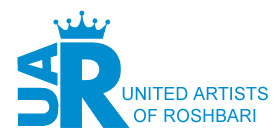Art is Watching You: Exploring the Interrelations Between Artwork and the Observer
Art has always held a powerful influence over individuals, capable of evoking a wide range of emotions and sparking deep contemplation. However, beyond being a mere passive experience, the relationship between the artwork and the observer is a dynamic and reciprocal one. In this essay, we delve into the notion that "Art is watching you," exploring the interconnections between the artwork and the person observing it. By delving into the perspectives of the artist, the observer's perception, and the transformative nature of art, we can unravel the profound impact art has on the human experience.
The Artist's Vision
Art
is born from the creative depths of an artist's mind, crafted with
intention and purpose. Each stroke, each color, and each form tells a
story, communicates an idea, or conveys an emotion. As the artist pours
their thoughts, experiences, and imagination onto the canvas, they leave
a piece of themselves embedded within the artwork. When an observer
engages with the art, they step into the artist's world, becoming a
participant in the conversation the artist has initiated. In this sense,
the artwork serves as the artist's voice, silently observing and
inviting the viewer to explore its depths.
The Observer's Perception
When
we stand before a piece of art, our role as mere spectators becomes
blurred. As we gaze upon the artwork, it begins to watch us in return.
The observer brings their own experiences, beliefs, and emotions to the
encounter, influencing how they interpret and connect with the artwork.
Each person perceives art through their unique lens, as it resonates
with their individual sensibilities and life experiences. The art, in
turn, observes the observer, absorbing their reactions and responses,
becoming a mirror that reflects and amplifies the observer's own
thoughts and feelings. The observer is not a passive recipient of the
art but an active participant in the co-creation of meaning.
The Transformative Nature of Art
Art
possesses a transformative power that transcends time and space. It has
the ability to challenge societal norms, provoke introspection, and
ignite social change. As the observer interacts with the artwork, it has
the potential to evoke a range of emotions - joy, sadness, awe, or even
discomfort. This emotional dialogue sparks a process of self-reflection
and introspection, leading to personal growth and expanded
perspectives. Art prompts us to question our assumptions, reassess our
beliefs, and reconsider our place in the world. In this way, art acts as
a catalyst, watching and guiding us towards new insights and
revelations.
The
relationship between the artwork and the observer extends beyond a
one-sided encounter. Art, in its multifaceted nature, observes the
viewer as much as the viewer observes it. It captures the artist's
vision and invites the observer to participate actively in the
meaning-making process. Art possesses the ability to transform,
challenge, and inspire, and in doing so, it profoundly impacts the human
experience. So the next time you stand before a piece of art, remember
that it is not just a static object; it watches you, engages with you,
and beckons you to explore the depths of your own being.



